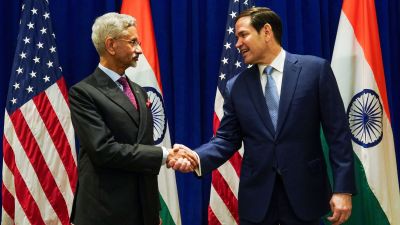Safs lack a window to the Wall
Sourav Ganguly should have known better than to have tested the patience of match referee Clive Lloyd. Problem is, the fallout of his over r...

Sourav Ganguly should have known better than to have tested the patience of match referee Clive Lloyd. Problem is, the fallout of his over rate indulgences against Pakistan is going to affect strategy during the two-match Test series against South Africa. Copping a two-match ban instead of a fine is the sort of message that the ICC have been wanting to impose on errant captains and now they have landed the Prince of Kolkata in their net. The studio audience in an NDTV sports programme agreed that the punishment fitted the crime of an over rate that was at times ludicrously slow.
While the Safs may be smiling in Jaipur at what they perceive to be India’s discomfort five days before the first Test starts in Kanpur, Rahul Dravid —handling the captaincy for the fifth Test out of the last eight — indicates that the tourists are going to need to find new tactics themselves to counter the different leadership style.
Dravid, ironically, captained India when they last played South Africa in a Test. This was the game at Centurion three years ago that became a political cauldron, losing its Test status after Jagmohan Dalmiya and the ICC had a stand-off.
But he has grown as a leader since then and comes with a different focus to that of the assertive aggression Ganguly displays, with its habit of rubbing off on most of the players around him. Notice Irfan Pathan’s tough body language at Eden Gardens on Saturday. He wasn’t going to give way to any Pakistan batsman and they knew it.
That’s Dada’s style for you: in your face and you had better be aware of it.
What we now have is Dravid’s calming influence and how noticeable it was against Pakistan in the first Test back in April, when Inzamam and other Pakistan players thought they could disturb the psyche of this brilliant batting technician. They failed and were mercilessly drilled with Virender Sehwag scoring that historic first triple century by an Indian.
Against Australia, Dravid took up the challenge under pressure in Mumbai and his intuitive trust in the spinners — on a pitch that Ricky Ponting wrecked with the heavy roller — created mindgames among the streetwise Aussies. Dravid, though, is not one to play mind games as does Ganguly, he allows the bowlers to work their plan according to strategy they have been given. It’s called adapatbility and he has mastered it well.
So far Graeme Smith and coach Ray Jennings have emphasised how they have studied video material and plan to cramp India’s batting style by setting fields, like Australia. What we have to look at here is whether the Safs have a bowling attack comparable to Australia’s, and how they will handle the mix of Indian pace and spin.
Only three of the Safs players have survived the Centurion game: Pollock (then the captain), Kallis and Jacques Rudolph. The rest have not faced the Indian Test attack in Indian conditions and they should be reminded that Anil Kumble (27) and Harbhajan (21 in three games) collected 48 wickets in the recent series.
Do the Safs have a plan to play the Indian spinners? Well, Rudolph batted superbly at Galle against Sri Lanka with a first innings century of rare quality and style, mastering a pitch where the turn was slow and low. One interesting ploy is the decision to open with the two left-handers in Jaipur. It is a strategy that could work in their favour as Smith did present an implacable defence in the second innings.
But that was Galle. Colombo it was different and even the crows, who as we know have a good nose for rubbish, turned down the the easy pickings available from the batting debris the Safs left behind.
Smith and Jennings have come with a lot of ideas and aggressive rhetoric. So did the Aussies, only they backed up their statements and walked away with a series win. If the Safs can’t can’t deliver the same way it might be an idea to zip the lip.
Photos


- 01
- 02
- 03
- 04
- 05





























